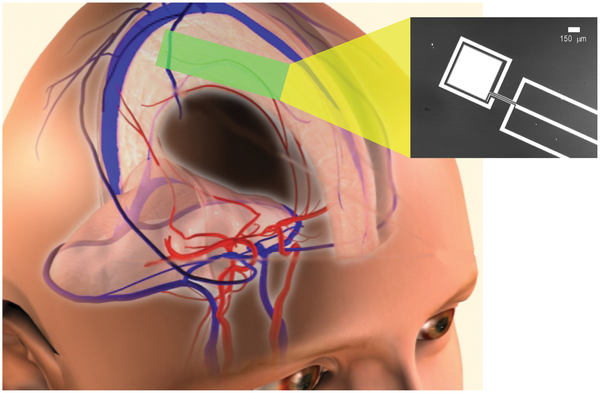
Image by Rapoport et al., meninges and vascular anatomy courtesy of the Central Nervous System Visual Perspectives Project, Karolinska Institute, and Stanford University.
Whatever, Google Glasses; I’m holding out for the Google brain implant. And that just got a little more plausible, thanks to new technology for fuel cells that run off of blood sugar. In theory, if you popped one of these babies in your brain, it could get all its power from your own cerebrospinal fluid (the stuff that cushions your brain inside your skull).
[Researcher Benjamin] Rapoport calculated that in theory, the glucose fuel cell could get all the sugar it needs from the cerebrospinal fluid (CSF) that bathes the brain and protects it from banging into the skull. There are very few cells in the CSF, so it’s highly unlikely that an implant located there would provoke an immune response. There is also significant glucose in the CSF, which does not generally get used by the body. Since only a small fraction of the available power is utilized by the glucose fuel cell, the impact on the brain’s function would likely be small.
This is not the first glucose-based fuel cell, but it’s the first one that’s a candidate for long-term implantation. That means the only remaining challenge is figuring out how to get Wikipedia directly into my short-term memory (or, even better, how to upload my brain to the internet — hello, singularity!). Once we have the tech, the power source will be taken care of.
Okay, technically this is not intended for making me a trivia whiz/immortal, but for worthwhile pursuits like helping people with spinal-cord injuries. We already know, for instance, that patients with spinal damage can move a robot arm, using a brain-machine interface. This would allow that robot arm to be powered by the brain instead of plugged in. And actually, the research is far from complete — the next step is to make sure it’s safe in animals. But I’m just going to assume it’s now only a matter of time before I can have instant access to search, email, and maps. And also a robot tail.



